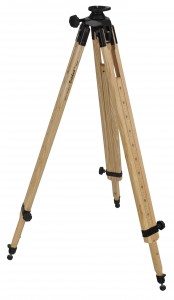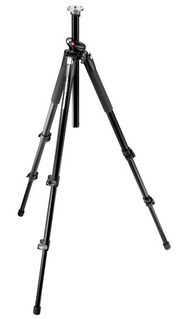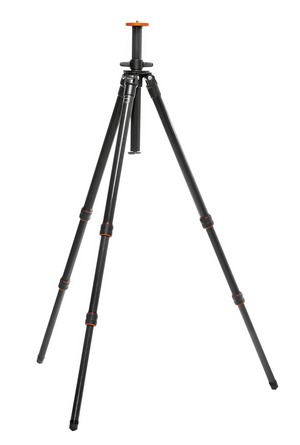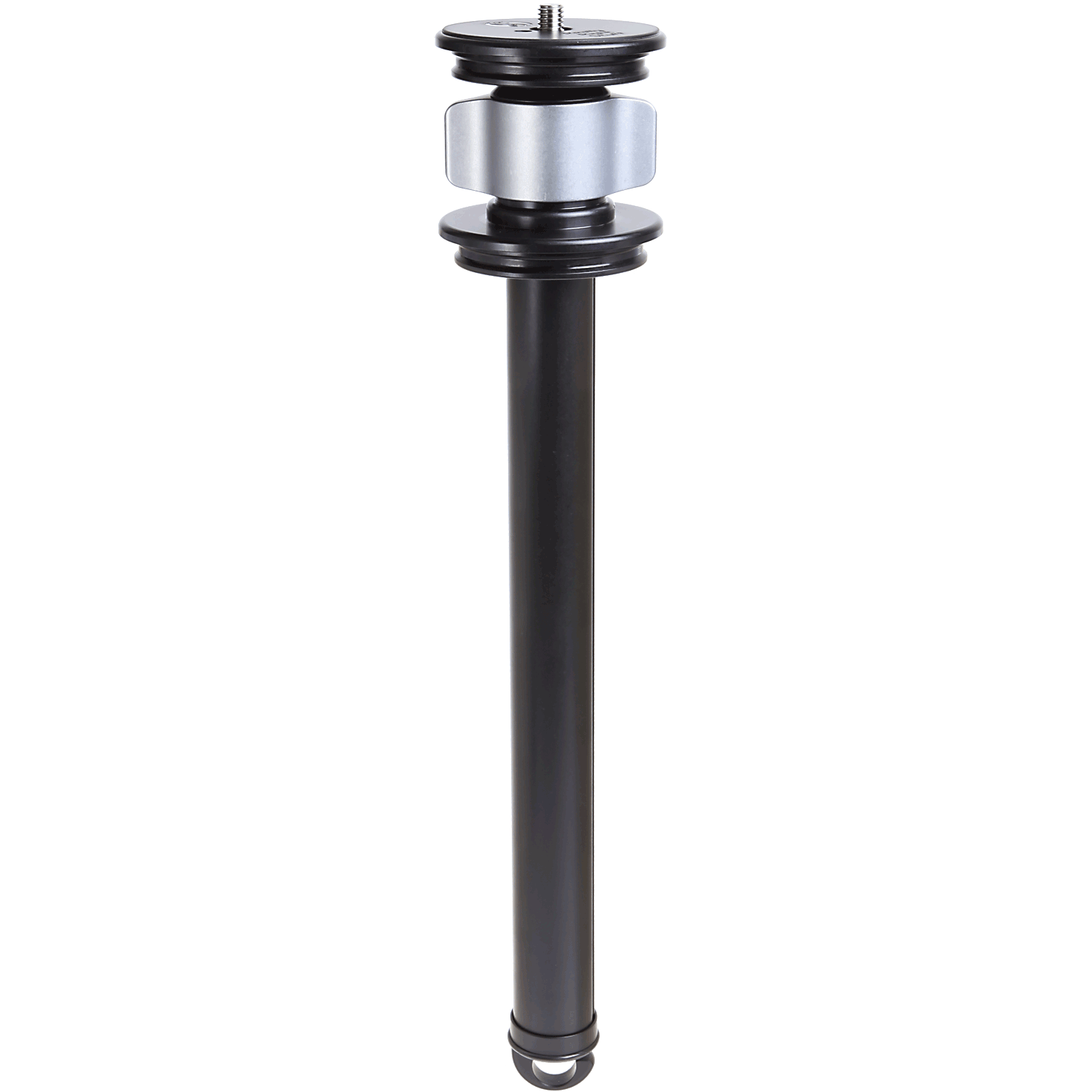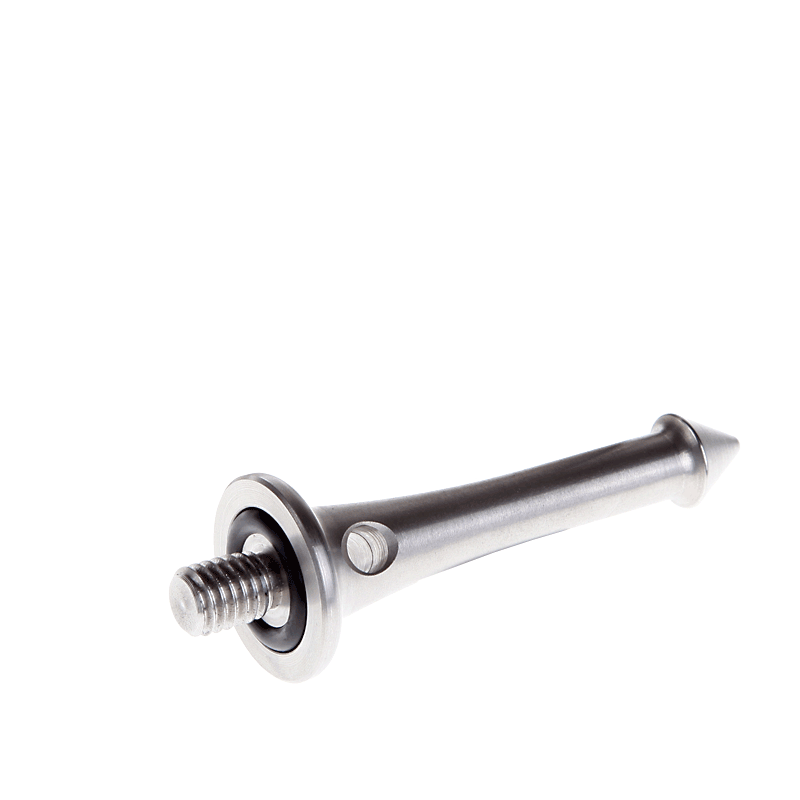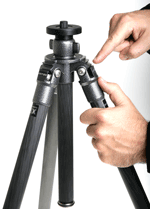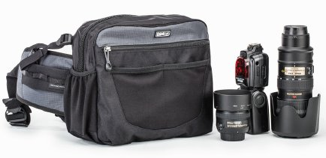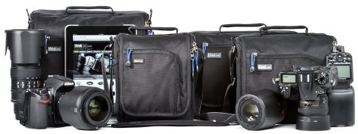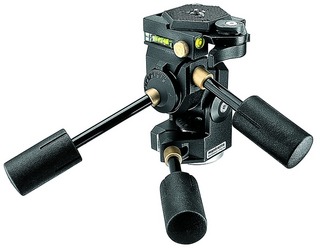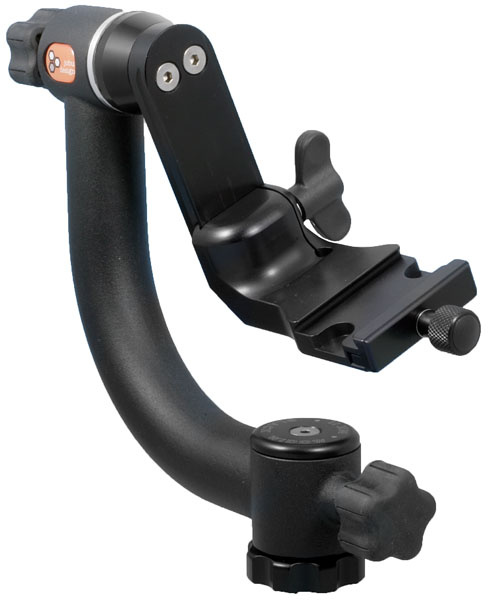A number of photographers have been asking me to take a closer look at the latest Olympus M4/3 camera, the OM-D E-M5 so with the support of Nathan Reeder at my local Henry's Camera store, here goes.
What Is It?
Olympus along with Lumix really started the entire mirrorless marketplace a few years ago and while many vendors have entered the space and done well (Sony, Fuji) and others have entered the space with underwhelming offerings (Canon, Nikon) the bellwether vendors remain the originators. The PEN series from Olympus look pretty much like everyone else's entry but the OM-D E-M5 (hereafter referred to as the OM-D) is a very different cat.
It really defines the whole idea of Digital Single Lens Mirrorless. It looks like a DSLR even including the pentaprism housing (sans pentaprism) but is a mirrorless using the now standard micro 4/3s sensor. When you first look at the OM-D and first pick it up, it's like a DSLR that is malnourished or forgot to eat its Wheaties for those readers old enough to remember those ads.
So M4/3 sensor, interchangeable lens, electronic viewfinder, touch screen OLED, battery grip, good lens assortment, HD video, TTL flash, full Auto to full Manual in a very small package.
Basic specs are as follows, detailed specs at the bottom of the post.
- M4/3 16MP Sesnor
- 5 Axis image Stabilization
- Full HD Video 1080/60i
- 4:3, 3:2,16:9 Aspect Ratios
- EVF with previews for exposure compensation, white balance adjustment
- 3.0 inch 610K dot articulating OLED display with touch capability
- 1/4000-60s plus B Shutter speed range
- 200-25600 ISO Range
- Metering range from EV0 to EV20
- Single Shot, Continuous, Manual, Manual +AF focusing
- TTL Flash including GN 7 flash in kit
- Exposure compensation and up to 7 shot bracketing
So at a glance, it looks like a decent mid level DSLR from a feature / function perspective. And that's really what it is but more on that later.
Unboxing and First Impressions
Olympus still hasn't figured out the Apple boxing principle, but the kit that includes the 12-50mm power zoom is easy to unpack and thoughtfully laid out. The battery came with about 60% charge in it and is good sized Lithium Ion cell. Olympus doesn't provide an average shot count, but in my own tests it takes about four hours to charge and while I surely didn't drive the shutter count up super high, mathematically it looks to me like the battery might last to 300 shots. Others are experiencing a bit less. So a potential downside will be the need for more batteries if you will use the camera heavily. Upside is that the battery charges in an external charger, so you can use the camera with a second battery while the first one is recharging. I wish Sony would learn that lesson.
The camera is light, under 1lb with a memory card and a battery in it. The upper left deck has the mode selector dial with PASM, plus SCN, Movie, ART and iAUTO settings. Top deck right has two unmarked wheels, the rear one adjusts the aperture or shutter speed depending on mode and the front one provides for exposure compensation. You can program the dials as you like, but the defaults are pretty usable. Far right is the programmable Fn2 button and the separate video start/stop button. The shutter release sits atop the front adjustment dial. Middle top deck has the hot shoe and a removeable section cover to allow mounting the including tiny flash or Olympus shoe mount accessories that also need access to the camera electronics. Layout is simple and easy to follow.
Looking at the rear, the OLED is big and bright, Although the fonts are very small, it's still very legible. Left of the eyepiece is the diopter adjustment and to the right is a push button that controls Live View. Further to the right are the Playback button and the programmable Fn1 button. Immediately below them is the needed thumb rest but it does make hitting the buttons a dexterity test as they are tiny and recessed. Below the thumb rest are the usual suspects of Menu and Info buttons then a multi-axis controller with selector in the centre and below that a trash button and the on-off switch. The switch is flush to the back and recessed so you won't be turning the camera on and off by accident. As noted the screen is articulating for overhead or low shots, but it does not swing away from the camera to face front as found on some DSLRs.
The left side of the camera has a USB port and micro-HDMI connector hidden under a rubber cover. You have to move the rear display to be able to free the rubber cover. There are three tiny holes for the built-in speaker in front of the cover.
The right side has the door for the SD card slot. A push rearward releases a very positive catch.
Looking at the bottom we find the metal tripod screw socket threaded for 1/4-20, a removable rubber plate for when you are connecting the accessory battery grip and the hinged door to the battery compartment.
From the front, there's a decent grip built into the right side, and the lens release button occupies the left side. There's a tiny self-timer lamp / focus assist lamp on the top front panel. Otherwise the front face is very clean and clutter free.
Of course the camera has strap lugs on either side and the first thing I noticed holding the camera is that the right side lug is in a position where it's ALWAYS poking me in the hand. This placement makes the camera unpleasant to hold and if it were mine, that three sided strap holder would be gone and I'd be using a Black Rapid strap right away. It's too bad because the strap lug placement really farks up the whole feel for me.
The Kit Glass
The kit lens in the unit I looked at is the new Olympus 12-50/3.5-6.3 Digital Zuiko. It takes a standard 52mm filter, something the Fuji gits could learn to emulated. The lens is plainly not optically fast, but is small and lightweight and provides a full frame equivalency to 24-100, a very nice working range. Particularly attractive about the lens is that it has three modes of operation. Keep the zoom ring to the rear and it's a smooth manual zoom. Push it forward and the zoom ring no longer rotates but engages a smoothly operating power zoom function. It's a bit easy to knock it from mode to mode, but I think that's an acclimatization thing. The macro mode is quite brilliant. Press in the Macro button and move the zoom ring forward and the lens locks into macro mode and I must say it works pretty darn well. There's also a window that advises you which mode the lens is in. The only downside to me is the slow lens speed. If I were buying, I'd likely opt for the 17/1.8 and the 45/1.8 in addition so I had some nice high speed glass. I did borrow the 45mm and will discuss it further on.
The FL-LM2 flash that's included is not built-in, you remove an access cover and slide it on. Like the popup flash on your DSLR, use it only under protest. With an ISO100 Guide Number of 7, you won't be bouncing this light anywhere. The best thing that can be said for it is that it comes in the box. If you want proper flash, you'll be buying one. Just like with any other decent DSLM.
Now that we've had a quick look at the unit, let's move on to its usability, starting with the menu system
The Menus
Olympus deserves credit for not making the menu system so convoluted you want to stick a fork in your eye. The pages are mostly a single screen long and it's fairly intuitive with the more common functions nearer the top. It took me a long time to find the Format card function because unlike most other cameras, it's at the top of the list not buried in some deep layer. Gold star for that. All the menu items have integrated help panels which are very useful as you are getting comfortable with the camera. I expect you can turn this off at some point but did not look to find out if this is possible. I was able to use the menus without referring to the docs. Speaking of docs, the printed doc is a VERY short quick start guide, the real documentation is provided on the CD. I would have looked at it, but my MacBook doesn't have a CD drive. Fortunately the manual is also available for electronic download and is searchable as it is a PDF. The version I looked at was in English and I found it easy to read and search. Loading it into iBooks on the iPad and iPhone keeps it handy, although a bit hard to read on the small screen.
Shooting the Camera
When in shooting mode, the OLED display has three basic configurations. Off, meaning black, meaning battery efficient, Full Info meaning ALL the information, much of it not specifically relevant to a given shot and intermediate giving you exposure info along with an innovative level system. Pressing Live View, does what you expect, with the similarly expected battery suckage. The EVF is bright and easy to use and I like the layout very much. I'm really enthused by the live presentation of how the exposure will look at different compensation settings or in manual mode. This one function alone is killer in my book and it's so simple that you'll want it on all your cameras.
The shutter release is smooth to the half press where the autofocus kicks in. Hold the button for auto-focus lock, and there's Fn1 whose default programming is Auto Exposure Lock. Press it again to release the lock. Pressing all the way through the shutter button captures the image. Initially I found the shutter button throw to be very long, but after shooting the camera for a while, I got used to it.
in my first test shots, which were literally snapped at random, I was quite pleased with the automatic white balance correction, specifically how nice a job it did making the whites white. I had a large Elinchrom softbox off to one side of the frame and with a proper exposure, it was white, not grey, blue or orange, despite horrible mixed lighting. In my initial shots I left the ISO in Auto mode and set the upper threshold to 3200. The ISO traversal is transparent but you always know where you are because of the information in the display.
i know that users don't read manuals. I have spent over three decades in the computer industry and work part time in a photography store and this fact is reinforced for me every day. So I tried to use the camera at first without reading the manual. It worked fine but until I figured out how the touch display does and doesn't work changing the ISO was a pain in the butt. Put the camera Info selection into full mode and tap the area of interest on the rear monitor. It turns green. Press the OK button at the centre of the multi-axis controller to drill down. Now use the MA controller to move around and click OK to lock a setting. If I'm supposed to be able to drill down with the touchscreen, I could not get that to work for me at all.
Frankly I gave up on the whole touchscreen idea pretty quickly. I find the all info screen cluttered and having it turn off and on as I move my eye to and from the eyepiece got old really quick. Instead I set the display to the basic exposure mode where a quick tap of the OK button in the MA controller brings up the full info screen and you can navigate around and drill down without hassle. I'm still not convinced that touchscreens have a place on a camera rear display.
Practical Use
It was a beautiful morning so after the home chores, I took the camera and lenses out into the -10 celsius bright winter day. I have large hands and shooting the camera wearing gloves was a non-starter for me, so I had to work with my right hand uncovered. The first thing I noticed is that walking around with the camera is easy because it's so light. I didn't connect the neck strap because the unit was borrowed for testing only, and just carried it in my left hand. I would not care to walk around for ninety minutes holding my 1Dx or Hasselblad in my hand but the OM-D was hardly noticeable. Serious points for light weight!
The camera focuses very fast and very accurately. I was glad of the diopter adjustment and I was able to get to very usable images very quickly. I shot in both aperture preferred and manual mode. I did try to use the power zoom but for stills I found the manual setting preferable for me. The macro configuration is super easy to use and makes the lens much more versatile.
Because the light was full sun with heavy shadows and not soft in any way, I made shots using exposure compensation most of the time. White balance was excellent even in the highly reflective snow conditions. I found that the usual guidelines for compensation in snow worked well with this sensor.
While I am not a big fan of the over the top implementations of HDR, there is a Lightroom / Photoshop trick that creates a 32 bit TIFF with incredible dynamic range. Basically you select your images, choose Merge to HDR Pro in Photoshop and when the ACR window displays the image, select 32 bit, remove ghosts and then File Save. You don't do an HDR tuning in Photoshop, and when you go back to Lightroom you have a TIFF file with up to 11 stops of dynamic range. To make these images simply, I used the excellent bracketing capability in the OM-D. The camera can automatically do a 3, 5 or 7 stop bracket with separations at 1, 0.7 and 0.3 stop intervals. (Note that the 1 stop intervals are limited to 5 stop brackets). Putting the camera into high speed burst, capturing 7 stop brackets is a breeze and handheld brackets are no problem at all in daylight. In fact, I think that if I owned the camera and was shooting landscapes with it, this configuration could become my default practice, it's that simple and that effective.
Processing
Once I got home, I put the card in a reader and copied the Olympus RAW files to their own dated subdirectory on a drive. Once they were copied, I ejected the card and then opened Lightroom and imported the files to my library using my customary Copy as DNG mode. Olympus' RAW has some minor level of compression but there was no discernable loss of image quality. There is a converter in Lightroom so the files were read without issue. Each file is around 15mb in size at full RAW in 4:3 aspect ratio. I was a bit disappointed that there are no Olympus lens profiles in Lightroom.
Processing the images is the same as any other digital file. I was very pleased with the results whether working on a single image or on a round-tripped 32 bit HDR. The level of image quality produced by the OM-D is excellent and there is lots of good data to work with when editing the images. I did not test JPEGs out of the camera. I subscribe to the Sammonism that "Raw Rules" and in my work I don't use JPEGs, so they weren't part of my tests. Neither were any of the Art modes built into the camera. So I have no idea of whether they're any good or not. The RAW images are excellent. I have found that the EVF is a bit warm but I also discovered adjustments can be made for the display.
Despite being outside in the cold for over 90 minutes and shooting about 130 images, the battery indicator still showed a full charge. After I'd been inside for a couple of hours, I fired it up to do some flash tests and the battery showed two-thirds and since then has fallen off slowly. There is a battery guide calibration capability but I have not done it.
I also made time to shoot the 45mm f/1.8 prime lens. With a 35mm full frame equivalence of 90mm, it's ideal for portraiture and of course short telephoto. The lens is physically very small, about the same size as a Leica M series 35mm. Filter size on the lens is 37mm. While the 12-50 really needs a hood to manage flare, the 45mm was not so prone to flareout. I did not get a chance to try the 17mm f/1.8 lens this time but other tests show it to be really nice and I would definitely have it in my kit.
Who's This Camera For?
All other notes aside, all cameras have a logical user fit, with some better suited to beginners than to pros. The OM-D is not a beginner's camera. That's not to say you cannot get great images out of the camera without knowing much about photography, but it's serious overkill for the person who really only wants an interchangeable lens point and shoot. Get an NEX-F3 for that purpose, you'll be happier. In my opinion, the OM-D is for the advanced amateur or professional. It's not about being that good, but about being that capable. Indeed, most recently, I have seen noted professional photographer Scott Bourne sell all his pro Canon gear and move entirely to the OM-D family. I won't be doing the same but after shooting the camera for a few days, I have become more and more impressed with the usability and image quality.
There are still minor annoyances, as I still have not figured out where to set the post capture rear display duration, and that right side strap lug is infuriating me. I suspect that if I bought the unit, I'd order the battery grip just to give me more to hang on to. I'd also pass on the 12-50 lens. Despite a nice range, it's slow and the macro feature while cool is not enough to warrant the purchase. Since I don't shoot a lot of video, the power zoom is of no value to me.
I did not test the 4/3 adapter to use other Olympus AF lenses. However, my friend Khalil has, and his kindest adjective was "slow".
My Kit If I Were To Buy One
- OM-D E-M5 Body
- HLD-6 Battery Grip
- FL-600R Flash
- BLN-1 Spare Battery (2)
- ED 14-150/4.0-5.6 Zoom and Hood (28-300mm equivalent)
- 17/1.8 and Hood (35mm equivalent)
- 45/1.8 and Hood (90mm equivalent)
- ED 60/2.8 Macro and Hood (120mm equivalent)
Sample Images
Detailed Specifications
Full credit for these specs goes to the very excellent http://www.omd-em5.com/
| TYPE |
Type |
Micro Four Thirds interchangeable lens system camera |
| a Media |
SD Memory Card (SDHC, SDXC, UHS-I compatible, Eye-Fi Card compatible) |
| Lens Mount |
Micro Four Thirds mount |
| IMAGE SENSOR |
Type |
4/3 Live MOS Sensor |
| Image Sensor Size |
17.3mm x 13.0mm (in 4:3 aspect ratio) |
| Total Pixels |
16.9 Megapixels |
| Camera Effective Pixels |
16.1 Megapixels |
| Processor |
TruePic VI |
| Color Filter |
Primary color filter (RGB) |
| Dust Reduction System |
Supersonic Wave Filter (dust reduction system for image sensor) |
| RECORDING SYSTEM |
Aspect Ratio |
4:3(Default) / 3:2 / 16:9 / 1:1 / 3:4 |
| Still Image Size |
Max resolution : 4608 x 3456
Other : 4608 x 3072, 4608 x 2592, 3456 x 3456,
2592 x 3456, 3200 x 2400, 3200 x 1800,
3216 x 2144, 2400 x 2400, 1824 x 2432,
2560 x 1920, 2560 x 1440, 2544 x 1696,
1920 x 1920, 1440 x 1920, 1920 x 1440,
1920 x 1080, 1920 x 1280, 1440 x 1440,
1104 x 1472, 1600 x 1200, 1536 x 864,
1584 x 1056, 1216 x 1216, 864 x 1152,
1280 x 960, 1280 x 720, 1296 x 864,
960 x 960, 720 x 960, 1024 x 768,
1024 x 576, 1008 x 672, 768 x 768,
576 x 768, 640 x 480, 640 x 360,
624 x 416, 480 x 480, 384 x 512 |
| Motion Image |
[MOV]
Full HD : 1920 x 1080, 59.94i Recording
HD : 1280 x 720, 59.94i Recording
[AVI Motion JPEG]
HD : 1280 x 720, 30fps
VGA : 640 x 480, 30fps |
| IS System |
Type |
Built-in (5-axis Image Stabilization) |
| Modes |
3 modes (IS1, IS2, IS3), OFF |
| Electronic Viewfinder |
Eye Level Finder Type |
approx. 1.44M |
| Eye point / Diopter adjustment range |
Approx. 100% / Approx. 0.92×1 – 1.15×2 (-1m-1, 50mm lens, Infinity) |
| Live view |
100% field of view, Exposure compensation preview, WB adjustment preview, Gradation auto preview, Face detection preview |
| Monitor Specs |
3.0-inch tilting OLED monitor, Approx. 610k dots, Touch control |
| Tilting angle |
Upward tilting angle : up to 80 degrees
Downward tilting angle : up to 50 degrees |
| FOCUS |
Type |
Contrast Detect |
| Focus Mode |
Single AF (S-AF) / Continuous AF (C-AF) / Manual Focus (MF) / S-AF + MF / AF tracking (C-AF + TR) |
| AF Mode |
Face detection / Eye detection / AF Tracking / 35-area multiple AFAll target, Group target area (9-area), Single target |
| AF Detective Range |
EV 0 – 20 (at normal temperature, 17mm f2.8, ISO 100) |
| AF illuminator |
YES |
| Metering System |
TTL Image sensor metering |
Digital ESP metering (324-area multi pattern metering), Center weighted average metering, Spot metering, Spot metering with highlight control, Spot metering with shadow control |
| Metering range |
EV 0 – 20 (at normal temperature, 17mm f2.8, ISO 100) |
| Exposure modes |
i Auto, P: Program AE,
A: Aperture priority AE, S: Shutter priority AE,
M: Manual, Bulb, Time, Scene select AE, Art Filter,
Underwater wide / macro |
| ISO Sensitivity |
AUTO: ISO 200 – 25600 (customizable, Default 200-1600) / Manual ISO 200 – 25600, 1/3 or 1 EV steps selectable |
| Exposure compensation |
3 EV in 1/3, 1/2, 1 EV steps selectable |
| AE Lock |
Locked at 1st release of shutter button (can be set to Fn1/Rec button) |
| Shutter System |
Type |
Computerized focal-plane shutter |
| Shutter speed |
1/4000 – 60 sec. (1/3, 1/2, or 1EV steps selectable.)
Bulb: default setting 8min. |
| Self Timer |
Operation time: 12 sec., 2 sec. |
| Bracketing |
Exposure bracketing |
2, 3 or 5 frames in 0.3/0.7/1.0EV steps selectable,
7 frames in 0.3/0.7EV steps selectable |
| White balance bracketing |
3 frames in 2, 4, 6 steps selectable in each A-B/G-M axis. |
| Flash bracketing |
3 frames in 0.3/0.7/1.0EV step selectable |
| Flash System |
Flash intensity control method |
TTL Auto, Auto*, Manual, FP-TTL AUTO*, FP-MANUAL* (* Available on the external flash) |
| Built-in flash |
No |
| Bundled flash (FL-LM2) |
TTL flash, GN=10 (ISO200) / GN=7(ISO100) |
| Compatible external flash |
FL-50/FL-50R, FL-36/FL-36R, FL-20, FL-14, FL-300R, FL-600R |
| Art Filter |
Mode |
Pop Art, Soft Focus, Pale & Light Color, Light Tone, Grainy Film, Pin Hole, Diorama, Cross Proscess, Gentle Sepia, Dramatic Tone, Key Line |
| Art Effect |
Soft Focus Effect, Pin-Hole Effect, White Edge Effect, Frame Effect, Star Light Effect |
| Level Gauge |
Detection |
2-axis |
| Digital Zoom |
Magnification |
x2 |
| Playback Functions |
Playback mode |
Single-frame, Information display, Index display, Calendar, Enlargement), Movie, Picture rotation, Slideshow |
| Information display |
Histogram, Highlight/Shadow point warning, AF frame, Photographic information, OFF |
| Input / Output |
USB/AV/Remote controller connector |
USB: USB2.0 High Speed,
Video: NTSC/PAL selectable,
Optional Remote cable RM-UC1 can be used. |
| HDMI connector |
Micro HDMI (Type-D) |
| Flash attachment |
Hot shoe |
| Accessory Port 2 |
Available for VF-2/VF-3, SEMA-1, MAL-1 and PP-1 |
| Micophone/Speaker |
Stereo/Mono |
| Power Requirements |
Battery |
BLN-1 Li-ion battery (included) |
| Power battery holder |
(Option) Power Battery Holder HLD-6 |
| AC adaptor |
(Option) AC adapter AC-3 |
| Dimensions / Weights |
Dimensions |
4.8 x 3.5 x 1.7 inch (W x H x D) |
| Weight |
Approx. 15 ounces (with battery, Memory card)
Approx. 13 ounces (body only) |



